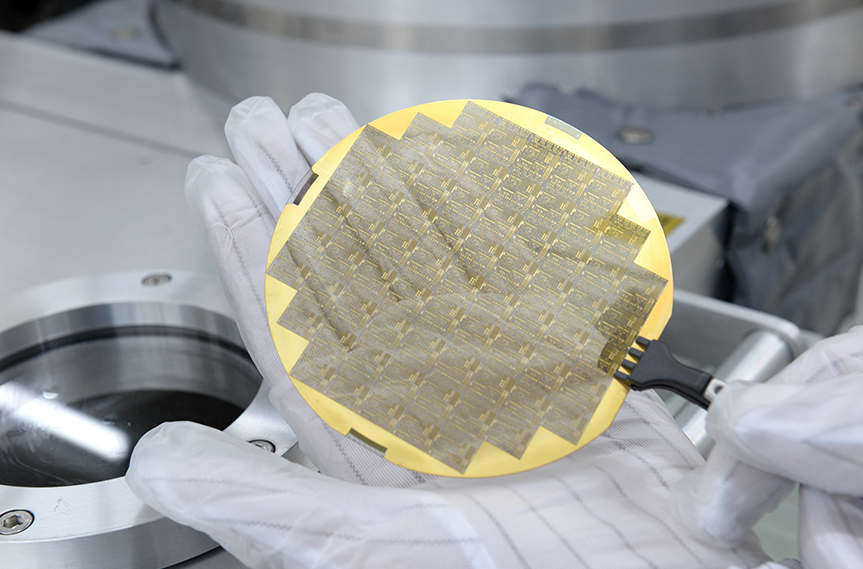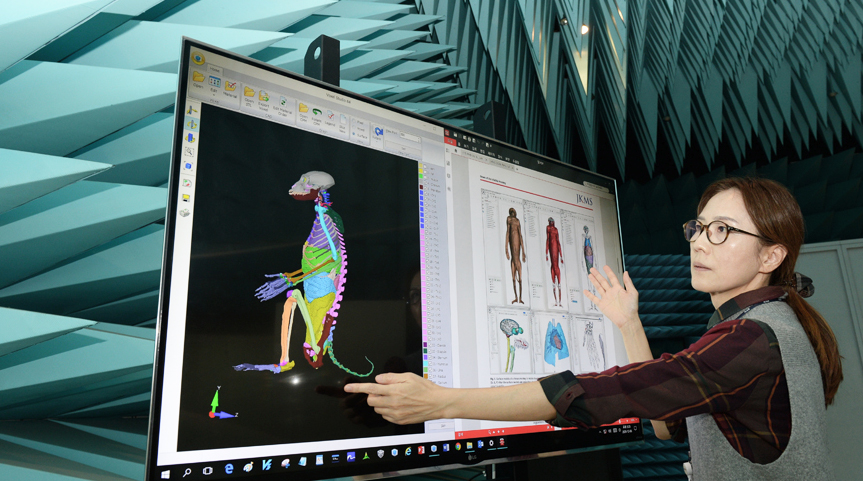VOL. 63 February 2021
News 1
ETRI DMC Convergence Research Department develops core technology for AESA Radar

Researchers in Korea have developed a technology that enables localization of key components applicable for radar transmitters and receivers. As a result, it is expected to alleviate the dependence on foreign technology, facilitate self-reliance of radar technology in the domestic defense, and overcome export license on materials, parts, and equipment.
The ETRI DMC Convergence Research Department, which was established as part of the National Research Council of Science & Technology’s Convergence Research Department project, announced last November 24 that it developed “the country’s first “GaN switch integrated circuit for radar transmitter and receiver that can be applied in a specific frequency band." It is significant since the design and production of the radar switch elements and integrated circuits were both demonstrated on domestic technology.
Radar requires radio wave control technology to generate high output power and minimize signal loss in the process of transmitting information for long-distance detection and surveillance. The developed technology is looked forward to be of great help in achieving independent defense as it can be used for the front end of Active Electronically Scanned Array (AESA) radar of fighter jets.
News 2
ETRI unveils virtual model to verify electromagnetic hazards

A human body model for virtual clinical trials has been launched on Open Data Portal. Such virtual data are available for researchers in various fields, significantly contributing to basic research on the human body.
ETRI announced that it has developed and made available on Data Dam (https://www.data.go.kr/) a human body model and a primate model as part of its research on the effects of electromagnetic waves on the human body and prevention measures. The data can be applied to virtual vivo experiments in other fields such as radioactivity as well as electromagnetic wave-related research. Such is expected to address the difficulties and limitations of clinical research conducted on the human body to some extent. The ETRI research team published the following three types of data: adult male and female full body model; head model; and primate model.
News 3
European Patent Office: ETRI files the largest number of 4IR-related patent applications
In a report published by the European Patent Office (EPO) last December 14, ETRI was the research institute with the most patent (IPF) applications related to 4IR worldwide.
ETRI applied for more than 1,500 patents from 2000 to 2018, outperforming all the other research institutes and universities around the world. Germany's Fraunhofer Society came in second, followed by the University of California.
Korea was ranked the second most innovative country in the world, thanks to the efforts by Korean research institutes and companies and ETRI. 10% of related patents were filed in Seoul, and Samsung and LG ranked first and third, respectively, in the world; Korea Advanced Institute of Science and Technology (KAIST) ranked 7th among research institutes and universities, proving that Korea is leading the technology related to 4IR.
Going forward, ETRI will continue 4IR-related R&D to achieve the vision of a “research institute for national intelligentization” and guide the entire process from securing of original technologies to commercialization.
Top 10 universities and public research institutes in 4IR-related patent applications (European Patent Office)
- Rank
- Name
- Country
- No. of patent applications
1
Electronics and Telecommunications Research Institute (ETRI)
Korea
1566
2
Fraunhofer
Germany
636
3
University of California
US
334
4
Industrial Technology Research Institute (ITRI)
Taiwan
290
5
China Academy of Inforation and Communications Technology
China
281
6
Harvard University
US
229
7
Korea Advanced Institute of Science and Technology (KAIST)
Korea
185
8
Massachusetts Institute of Technology (MIT)
US
179
9
Commissariat à l'Energie Atomique
France
169
10
Netherlands Organisation for Applied Scientific Research (TNO)
Netherlands
138
